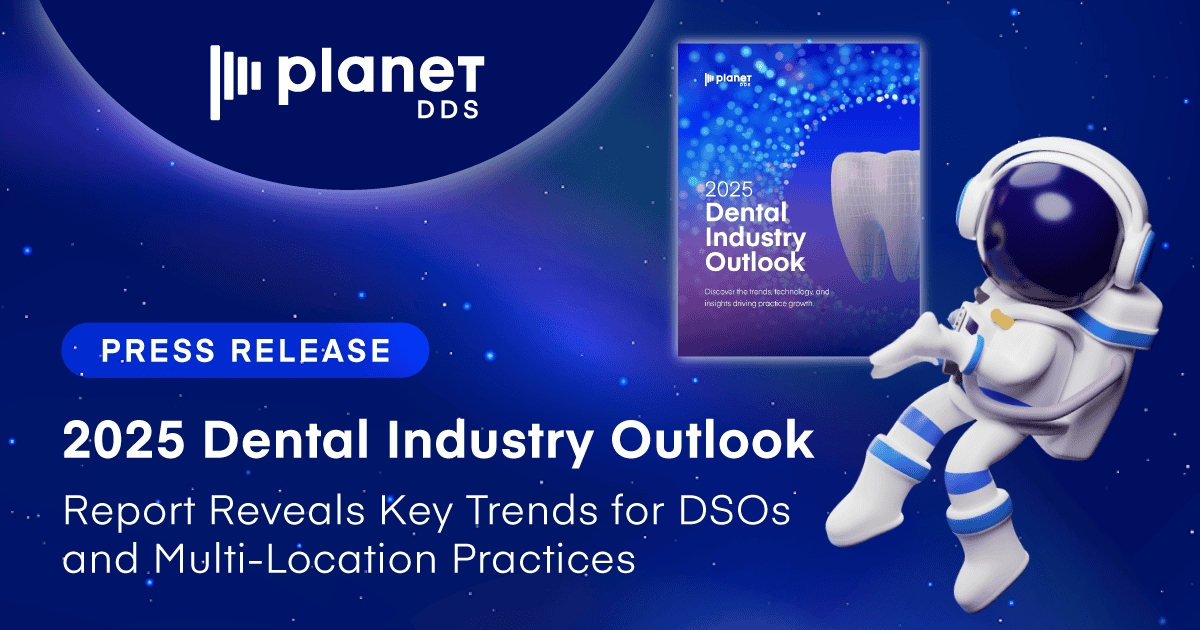How to Improve Your Chairside Manner and Create an Elevated Dental Patient Experience

“It’s not what you say…but how you say it.”
That idea has relevance to most personal interactions. It also aligns with the value of improving your chairside manner.
As a dentist you “say” a lot. You diagnose, discuss the condition of your patient’s oral health, explain treatment and procedures, and much more.
On the other hand, “how” you say all those things (vital to your patient’s dental care, of course) can make a difference in how they respond and whether they continue to return to your practice.
The Importance of Your Chairside Manner
The patient-doctor relationship has many facets. Not only does it encompass the trust that patients place in your clinical expertise, but patients also place an equally high value in your chairside manner.
A related, in-depth study was conducted by the Royal College of Dental Surgeons of Ontario (RCDSO) between 2007 and 2017. Standard of care was the focus.
Relative to clinical care and treatment they found that…
“…59% of all complaints were related to clinical care and treatment, while 56% involved interpersonal relationships and conduct, such as how the patient was treated, and issues around informed consent. The lowest volume of complaints, 42%, involved management and access to care.” 1
Lead organizer of the study, Monika Roerig, MA, and a research associate at the University of Toronto Faculty of Dentistry, confirms:
“The study shows us that it’s important to have excellent clinical care and safety, but communication and interpersonal skills were extremely important. The two work hand in hand…” 2
Study contributors observed that “…a larger percentage of complaints (from patients) were about interaction and communication.” 3
Bottom line: improve your chairside “interaction” and “communication” and you’ll likely see an improved patient experience!
How to Improve Your Chairside Manner
Let’s make this as practical as possible: small improvements can lead to major transformations in how you interact with your patients during their time in your chair
Lead with a “Smiling” Demeanor
Masks have been a patient care standard for a while. Yet, the COVID-19 era has expanded facial coverings beyond the standard treatment protocols and you must now rely more on a “smiling attitude.”
For starters, it’s that emotional “lift” you apply to your voice when you greet the patient in the chair. It’s important to treat them as if they’re the first patient of the day even when your energy doesn’t feel high.
Keep in mind that your patients carry their own mood into your office, too. Like you, they could be tired, frustrated, burdened, overwhelmed, running behind, frazzled, you name it!
A smile is more than showing your teeth. It can be an attitude as well.
- “Smile” with your voice. Use a lifting tone without sounding “fake.”
- “Smile” with how you explain their procedure.
- “Smile” through issues that arise during their treatment. Stay cool under pressure and they will more likely do so.
Look Engaged
We talk about patient engagement. It’s equally vital that you appear engaged in their time in the chair.
- Eye contact (especially behind a mask) reveals a personal connection.
- Welcome them by name.
- Treat each patient individually. Dentistry is about more than teeth and gums.
That brings us to the importance of personalization.
Learn and Leverage Your Personal Connection
It’s easy for your patients to become a mass of clinical data. You’re treating their dental issue but you’re also partnering with them to improve their lifestyle, transform their health and appearance, and boost their confidence.
Your patient in the chair has goals and reasons for seeking your dental expertise. And it’s not always pain relief.
- Know why a particular treatment or procedure is important to them besides just the diagnosis. For example, a whitening procedure could be a step towards confidence for a job interview or a personal relationship.
- Know their interests, family, hobbies, and lifestyle. Refresh a previous conversation with them about a trip, an important family milestone, an upcoming event, etc.
- Know their personal relationship to dentistry. Extra effort to help ease their anxiety or to acknowledge their investment in their oral health will be appreciated.
Reduce the Ambiguity and Acknowledge Their Effort
You can “shoot-straight” with your patients without being insensitive. They trust your expertise so it makes sense that their diagnosis should be presented in a straightforward way.
- Show confidence when diagnosing and recommending treatment.
- Give them the facts about their dental issue and the specific benefits their treatment will produce.
And give them credit for investing time, effort, and resources in their oral health. They’re in your chair and for many that’s already a major step.
- Praise the positives that you observe.
- Pique their interest by sharing the benefits of care improvement.
- Promote their next visit by helping them depart on a high note.
A Positive Chairside Manner Helps Produce Lifetime Patient Relationships
Patient acquisition is a strategic process. Retaining them and their loyalty to your dental practice requires a memorable patient experience. It’s important to not only have a positive chairside manner as the dentist, but also to put in place, a culture of positive chairside (or waiting room) manner throughout your team.
Consider a Cloud-Based Solution to Streamline Manual Tasks and Spend More Face-to-Face Time with Patients
With a cloud-based solution, like Denticon Practice Management, your practice can increase efficiencies, streamline tasks, and overall save time – meaning more time for you and your staff to spend caring for patients. With less time spent on administrative tasks, you’ll have more time to spend improving your overall patent experience and keep your patients coming back.
Interested in seeing how Denticon Practice Management can help your practice? Request a demo today!



